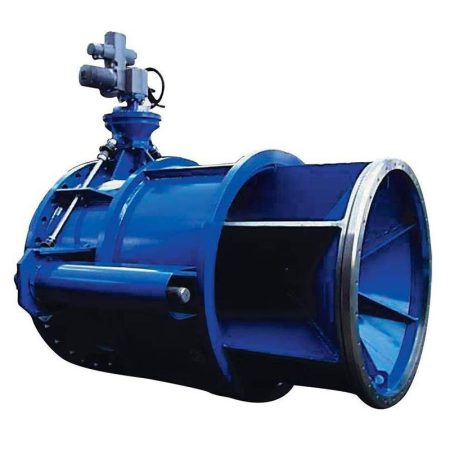
Fixed cone valve technology is very important for dams. These valves help control water flow. They also help spread out energy and keep downstream areas safe. Operators use fixed cone valves and hollow jet valves for better control. This helps save energy and makes hydroelectric power work better.
- Industry reports say fixed cone valves are used in 30% of dams. They work well and last long, even with high pressure.
- These valves can work with electric valve and pneumatic valve systems. Pneumatic control valve automation helps watch and control things in real time. This makes hydroelectric power generation more efficient.
Fixed Cone Valve Functions in Dam Operations
Flow Regulation
Fixed cone valves are very important for letting water out of dams. They help control how much water flows out. Operators can move these valves to let out more or less water. This means they can make the water flow just right. The cone shape spreads water out smoothly. This stops sudden bursts and keeps the water steady. Fixed cone valves work well when water pressure is high. They keep the flow safe and steady.
Fixed cone valves are better than gate valves for controlling water flow. They are more accurate and reliable. These valves do not get damaged by shaking or vibration. They last a long time, even with strong water pressure.
| Feature | Fixed Cone Valve | Gate Valve |
|---|---|---|
| Flow Regulation Accuracy | Lets you control water flow very precisely; water moves out smoothly | Mostly just opens or closes; not good for careful control |
| Cavitation Prevention | Stops bubbles from forming and hurting pipes and valves | Does not stop bubbles; can cause rough water and damage |
| Pressure & Temperature Range | Works with very high pressure and hot or cold water | Handles lower pressure; not good for tough jobs |
| Application in Dam Operations | Great for dam outlets and hydropower because it controls water well and lasts long | Used mostly to shut off water; not for careful control; common in water pipes |
Fixed cone valves help make sure the water flow fits what is needed. This could be for farms, stopping floods, or making electricity. They are strong and can handle lots of pressure without breaking.
Energy Dissipation
Getting rid of extra water energy is very important at dams. When water moves fast through a dam, it has a lot of power. This power can hurt things downstream. Fixed cone valves help by turning fast, strong water into a softer spray. This makes the water lose some of its force before it hits the river.
Tests show that fixed cone valves are good at getting rid of extra water energy. Special tests prove these valves lower the pressure safely, even with lots of air in the water. This helps keep things safe below the dam. The cone shape also stops bubbles that can hurt pipes and valves.
Engineers like fixed cone valves because they work well with strong water pressure. They keep the water moving smoothly. By spreading out the water and making it swirl, these valves stop too much splashing or washing away of dirt.
Erosion Control
Stopping erosion is very important when letting water out of a dam. Fast, strong water can wash away dirt and rocks. It can even damage things built downstream. Fixed cone valves help by spreading the water out wide. This makes the water hit the ground less hard.
- Fixed cone valves help protect the area below the dam by:
- Making the water less strong in one spot.
- Stopping the riverbank from being washed away.
- Helping dams last longer and work better.
People who run dams use fixed cone valves when water pressure is high. These valves help keep the dam and the land around it safe. By aiming and slowing down the water, they make sure everything works well.
Tip: Checking and fixing fixed cone valves often makes them work even better for stopping erosion and getting rid of extra water energy.
Design and Operation of Hollow Jet valve
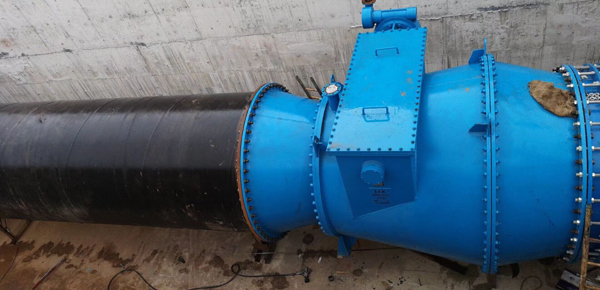
Structure and Mechanism
Hollow jet valves, also called fixed cone valves, help control strong water flow at dams. Inside, there is a cone-shaped plug in a round body. When the valve opens, water goes around the cone and comes out as a hollow jet. This shape lets the valve handle strong water without getting hurt by bubbles. The balanced design means it does not need much force to open, which is good for high-pressure water.
Engineers pick hollow jet valves because they are simple and stop bubbles from hurting the valve. The valve sends water out to the sides, which spreads out the force and stops the ground from washing away. Many valves are made from carbon steel, cast steel, or stainless steel to last a long time. Some have hoods or baffles to guide the water and slow it down before it hits the riverbed.
Control Methods
People use different ways to control hollow jet valves at dams. The most common ways are hydraulic and electric systems. Hydraulic actuators work well underwater or with strong water. They move the valve fast or slow and can use backup power for emergencies. Electric actuators are used above water and can use batteries if the power goes out.
Choosing the right valve and control depends on things like water height, river conditions, and how often the flow changes. For strong water, hydraulic systems give good control and work well. Electric systems are safe and flexible, especially with backup power.
- Common outlet valves for medium to high head dams include:
- Fixed cone (Howell-Bunger) valves
- Jet flow gate valves
- Throttling knife gate valves
Each valve type has special features for strong water, but hollow jet valves are known for their balance and energy control.
Suitability for Medium to High Head Dams
Hollow jet valves are great for medium to high head dams because they can handle strong water up to 400 meters high. Their design lets operators control water flow easily and helps with both flow and environmental needs. The valves can open more than 10%, so operators can manage water levels and river flow.
These valves do not need big rooms, so they are easy to put in and fix. They are small and strong, so they work well in tough dam jobs. With hoods or baffles, hollow jet valves can slow down the water by up to 90%, which keeps the area below the dam safe from damage.
Note: Hollow jet valves are safe and work well for strong water, so many new dams use them.
Advantages for Energy Efficiency and Safety
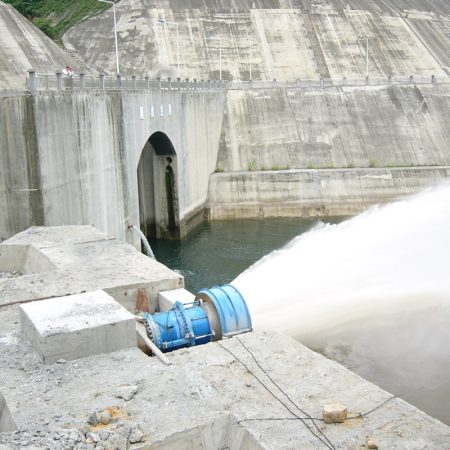
Precision and Reliability
Fixed cone valves help control water in dams very well. Operators can open or close the valve to fit what is needed. This makes the water flow steady and helps things run smoothly. The cone shape makes water come out in a hollow jet. This helps spread out the water’s energy and keeps things safe downstream. It also stops damage and lowers stress on dam parts.
Engineers use fixed cone valves because they work well and last long. The strong build lets them handle high pressure and big changes in temperature. Special ribs and tough materials help the valve stay strong. Each valve goes through hard tests to make sure it is safe. Careful building and checks mean the valve works the same every time.
- Some main benefits of fixed cone valves for safety are:
- They control water flow very well.
- They stop rough water and bubbles.
- They last a long time and do not wear out fast.
- They can act quickly if there is an emergency.
Operators trust these valves to save energy and keep things working right. Being able to control water well helps make electricity and keeps the dam safe.
Low Maintenance
Fixed cone valves do not need much fixing compared to old valve types. Their smart design stops bubbles and rust, so they last longer. Strong metals like carbon steel and stainless steel help them stay good even with daily use. New technology and sensors let people watch the valve all the time. This helps fix problems before they get big and saves money.
One fixed cone valve at Summersville Dam worked for fifty years before it was changed. Using it every day did not wear it out much, showing it is tough. Since 2001, water started going to a power plant, so the valve had less work. Because it lasts so long, it costs less to keep up and does not break often. Operators get good results and can run things better.
Fixed cone valves help manage water well because they do not break often. This lets dam workers focus on keeping water safe and running things smoothly.
Safety Features
Safety is very important when running dams. Fixed cone valves have special parts that make them safer. The cone jet spreads out water energy, so there are no sudden bursts. This keeps the area below the dam safe. Operators can close the valve fast if something goes wrong, protecting people and machines.
The valve’s shape stops rough water and bubbles, so there is less risk of damage from fast water. Tough materials and special parts help protect the valve even more. Smart systems give live updates, so workers can act fast if things change.
- Safety features of fixed cone valves include:
- Spreading out water energy safely
- Quick closing in emergencies
- Live monitoring for early fixes
- Meeting safety rules for dams
These things make fixed cone valves a top pick for dam workers who want safety and to save energy. Being able to control water well, fix less, and use smart safety tools helps keep water safe and the dam working for a long time.
Tip: Checking valves often and using smart monitors helps keep safety high and makes fixed cone valves last longer.
Applications in Hydroelectric Power Generation
Turbine Bypass
Fixed cone valves are very important in hydroelectric power plants. They help control water when it goes around turbines. Operators use these valves to manage how water leaves the dam. The valves handle strong water pressure and make a hollow jet. This jet spreads out energy and keeps things safe downstream. Hydropower engineers pick fixed cone valves because they control water very well. The valves are tough and work in hard situations, like emergencies or sudden changes. Actuators help operators move the valves exactly how they need. This makes the dam safer and more stable. By spreading out energy, fixed cone valves help turbines and other parts last longer.
- Some good things about fixed cone valves in turbine bypass systems:
- They control pressure at the turbine inlet.
- They let out water safely during emergencies.
- They help the dam work better and safer.
- They protect areas below the dam from strong water.
- They help engineers manage water well in hydropower plants.
Operators trust fixed cone valves to keep dam water release steady and help hydroelectric power plants work better.
Reservoir Drainage
Fixed cone valves are great for draining reservoirs in hydroelectric power plants. When old valves cannot handle strong water or fast flow, fixed cone valves work better. In the Digley reservoir, engineers put in a fixed cone valve to replace the old scour valve. This made it easier to use and kept water drawdown at least 1 meter each day. The valve handled strong water and let it out safely, even when things were tough. Putting a hood downstream made the valve work even better. This shows how engineers can solve hard water problems. Fixed cone valves help operators run dams well and keep water release safe.
Fixed cone valves make draining reservoirs safer and help hydroelectric power plants work better.
Continuous Discharge Control
Hydroelectric power plants need to control water flow all the time. Fixed cone valves help keep water moving smoothly from zero to full flow. They do not make bubbles, so water stays steady. The ribs on the valve stop shaking, which helps the dam work better and stay stable. These valves let out a lot of water and help engineers reach their goals. Special hoods cut down energy loss by up to 90 percent. This makes fixed cone valves great for letting water out freely. Operators use these valves to control water levels, bypass turbines, and manage water flow in hydroelectric power plants.
| Feature | Fixed Cone Valve Benefit |
|---|---|
| Flow Regulation | Smooth, steady water releases |
| Vibration Reduction | Helps the dam work better |
| Energy Dissipation | Up to 90% less energy lost with hood |
| Application | Controls water flow all the time |
Using fixed cone valves for steady water flow helps hydroelectric power plants manage water well and work better.
Real-World Dam Case Studies
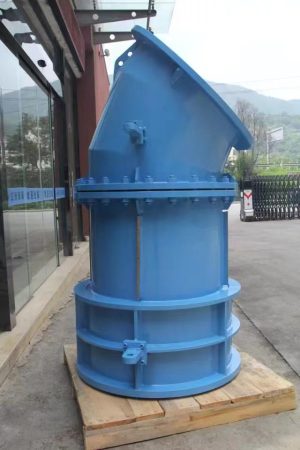
North American Hydroelectric Dam
Many hydroelectric projects in North America use fixed cone valves. These valves help dams work safely and well. The Lower Baker Dam is a good example. Engineers put in a 60-inch fixed cone valve for an automatic bypass. This valve keeps water flowing at a safe level. It also helps slow down the power units when needed. The project built a new 30-MW powerhouse. This made water releases better and helped follow strict rules.
- Main things about the Lower Baker Dam project:
- The fixed cone valve works with the power units.
- It makes sure water flow rules are followed.
- The system lets workers change things easily.
- The team focused on safety, time, quality, and cost.
This project shows how fixed cone valves help make power and keep water steady. They also protect the river below the dam. Workers can change the system fast. This helps them handle new problems and keep the dam safe.
Flood Control in Asia
Flood control is very important in many Asian countries. Dams in China, Japan, and India use fixed cone valves to let water out. These valves control water flow very carefully. This stops too much pressure and keeps things safe during big storms or rising water.
- Fixed cone valves help by:
- Controlling water during floods.
- Handling lots of water in big dams.
- Helping governments build better flood safety systems.
- Using smart technology and strong materials to work better.
Hydropower teams in Asia pick fixed cone valves because they work in tough weather. They also work when rivers change a lot. More people want good flood control, so these valves are used more in new dam projects.
Hydraulic Model Investigations
Hydraulic model tests help engineers see how fixed cone valves work in real life. The Tennessee Valley Authority did tests on fixed-dispersion cone valves at different places. These tests looked at how much air the valves need and how they work with other parts.
Researchers learned that air needs change depending on where the valve is. The tests showed how fixed cone valves work in closed pipes. They also showed how air paths can change how well the valves work. These lessons help engineers make better water systems for dams.
Summersville Dam is often used as an example in these studies. Engineers use what they learn from these tests to make valves work better and keep dams safe. The results show that fixed cone valves are good for both new and old hydroelectric projects.
Innovations in Fixed Cone Valve Technology
Material Improvements
Engineers have changed what fixed cone valves are made of. These changes help the valves last longer and work better in hard places. Many new valves use special alloys and composite materials. These materials stop rust and damage, even with rough or dirty water. Factories now use careful welding and cutting. This makes each valve strong and helps control water better.
Some new designs help too. Smooth edges between parts lower stress and help the valve last longer. Rounded sealing surfaces spread out pressure, so the valve can handle changes. Special actuators make the valve move easier and wear out less. Many companies now offer lots of strong alloys. This lets workers pick the best one for each dam. Good sealing keeps water from leaking, which is very important for power plants.
- Main material improvements in new cone valve technology:
- Alloys and composites that do not rust
- Careful building for stronger valves
- Smooth and rounded parts for longer life
- Special actuators for easy movement
Smart Monitoring Integration
New cone valve technology uses smart monitoring systems. These systems help workers watch valves all the time. Sensors track how the valve works and send alerts if something is wrong. This helps workers fix problems before they get worse. Tools use data to show when a valve needs fixing. This means less downtime and keeps power plants running well.
Workers can check valves from a control room or far away. Smart systems also help save energy by opening and closing valves at the right time. Many new power plants use these smart tools to keep water flow safe and steady. With new cone valve technology, teams can find leaks or pressure drops early.
Tip: Smart monitoring helps dams avoid big repairs and keeps power plants safe and working well.
Environmental Enhancements
New cone valve technology also helps protect nature. New designs spread out water energy better, which stops erosion and keeps riverbanks safe. Some valves use special hoods or baffles to slow water before it hits the river. This helps fish and plants living downstream.
Many power plants now use valves that lower noise and shaking. This makes the area around the dam safer for animals and people. Some new cone valve technology uses materials that do not hurt water or soil. These changes help dams follow strict rules and keep rivers healthy.
| Environmental Benefit | Advanced Cone Valve Technology Feature |
|---|---|
| Less erosion | Wide spray and energy-dissipating hoods |
| Safer for fish | Smooth water flow and gentle discharge |
| Lower noise | Special shapes and materials |
| Cleaner water | Non-toxic, corrosion-resistant alloys |
Engineers keep making new cone valve technology better. This helps power plants work well and keeps nature safe at the same time.
Challenges and Solutions
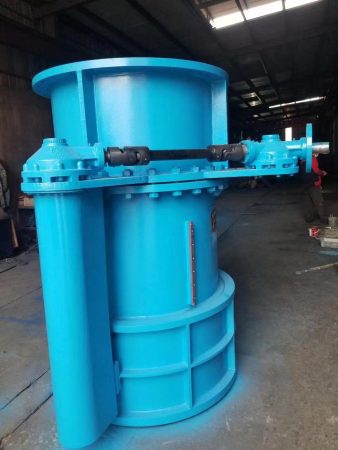
Installation Issues
Engineers have some problems when putting in fixed cone valves. The valve must fit the dam’s hydraulic system and spillway. Workers check the site for strong water and rough spots. Sometimes, the dam’s shape makes it hard to put in the valve. Big machines lift the valve into place. Teams use careful measurements to line up the valve with the outlet. If the valve does not fit, water might leak or hurt the dam.
Many dams use special valves made just for them. Engineers work with makers to design valves for each dam’s needs. They pick strong materials that do not rust. Careful planning helps stop mistakes when putting in the valve. Teams often use 3D models to see how the valve will work with water flow.
Note: Good planning and teamwork make putting in the valve safer and faster.
Maintenance Strategies
Fixed cone valves need regular care to keep working well. Maintenance teams follow plans to check how the valve works with water. Skilled workers look for signs of damage or wear. They fix small problems before they get worse.
Operators use materials that do not rust to protect the valve from bad water. The valve’s shape helps control water and spread out energy, so it wears less. Teams make special care plans for each dam’s water system.
- Key ways to care for valves are:
- Checking often for leaks or rust
- Fixing problems fast with trained workers
- Getting expert help to make water flow better
- Picking strong materials for tough water
- Making care plans for each dam
- Working with engineers for special fixes
- Using sensors to watch water flow and valve health
Needing less care means less time stopped and lower costs. Teams keep the valve working by changing plans as things change.
Operator Training
Operators must learn how to use fixed cone valves with the dam’s water system. Training teaches workers to open and close the valve safely. Staff learn to control water and act fast in emergencies.
Engineers show how the valve works with hydraulic actuators. Workers practice using control panels and watching systems. Training shows how to find problems and fix them quickly.
Tip: Training often helps operators keep the dam safe and the water system working well.
Many dam projects use hands-on training with real valves. Teams learn to adjust the valve for different water needs. Good training stops mistakes and keeps the dam working right.
Fixed cone valves are very important in making hydroelectric power. They help control water flow exactly, save energy, and keep rivers safe. Recent studies show some main ideas:
- Fixed cone valves help make hydroelectric power by sending the right amount of water to turbines.
- New materials and smart tools make these valves last longer and work better in power plants.
- Watching valves in real time and fixing them before they break helps power plants run smoothly.
- Better designs stop bubbles and save energy in hydroelectric systems.
- New ideas help fixed cone valves fit with worldwide plans for clean energy.
- More power plants are using these valves as the market grows fast.
- Rules and caring for nature make more projects use these valves.
- Valves that come in parts are quicker to put in at power plants.
- Asia-Pacific uses these valves the most because cities are growing fast.
- Fixed cone valves help make hydroelectric power that is steady, saves energy, and is good for the environment.
Dam workers and engineers should use the best fixed cone valve solutions to make clean hydroelectric power and get ready for future energy needs.
FAQ
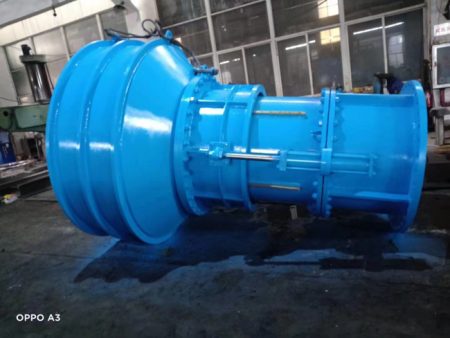
What is a fixed cone valve?
A fixed cone valve helps control water at dams. It has a cone-shaped plug inside. This plug lets water out in a safe, controlled jet. Engineers use it to handle strong water pressure.
How do fixed cone valves help prevent erosion?
Fixed cone valves spray water out wide. This makes the water hit the ground less hard. The design keeps soil and buildings downstream safe from being washed away.
Where are fixed cone valves most commonly used?
Engineers put fixed cone valves in medium or high head dams. These valves work in hydroelectric plants and flood control projects. They also help at reservoir outlets. They handle strong water and keep water releases safe.
What maintenance do fixed cone valves require?
Operators check fixed cone valves often for leaks or rust. They clean and oil the moving parts. Sensors and smart tools help find problems early. This saves time and money on repairs.
Can fixed cone valves operate automatically?
Yes, fixed cone valves can work with electric or hydraulic actuators. Operators can change settings from far away. Automation makes things safer and keeps water flow just right.
How do fixed cone valves support environmental protection?
Fixed cone valves slow down water before it reaches the river. This helps protect fish, plants, and riverbanks. Some valves have hoods or baffles to lower noise and stop erosion even more.
What makes fixed cone valves different from gate valves?
Fixed cone valves control water flow very carefully. They also spread out water energy. Gate valves mostly just open or close the water. Fixed cone valves last longer with strong water and stop damage from bubbles.
Are fixed cone valves suitable for emergency situations?
Engineers trust fixed cone valves in emergencies. The valves can open or close fast to let water out or stop it. This helps keep the dam and areas below safe during floods or problems.
